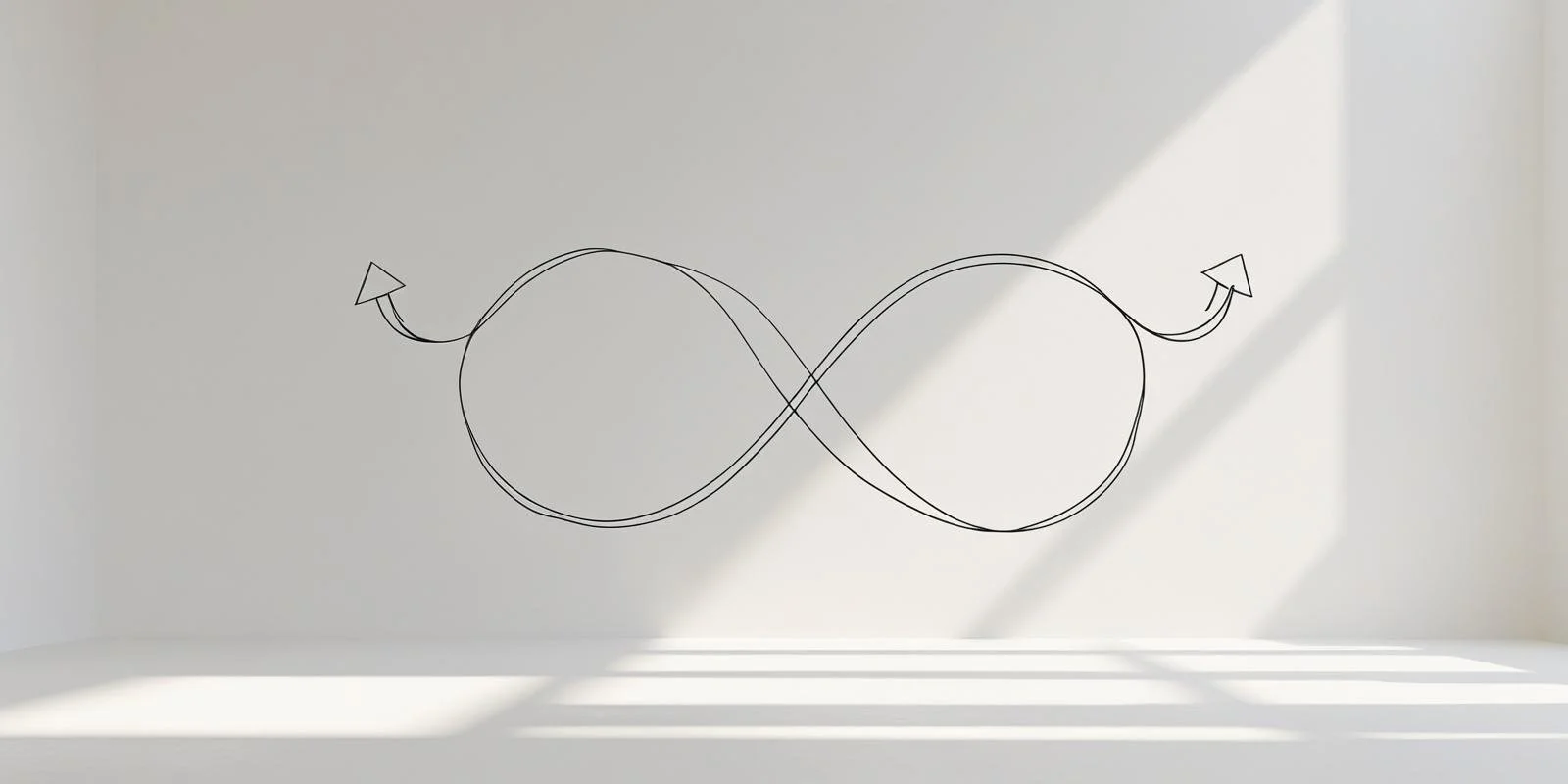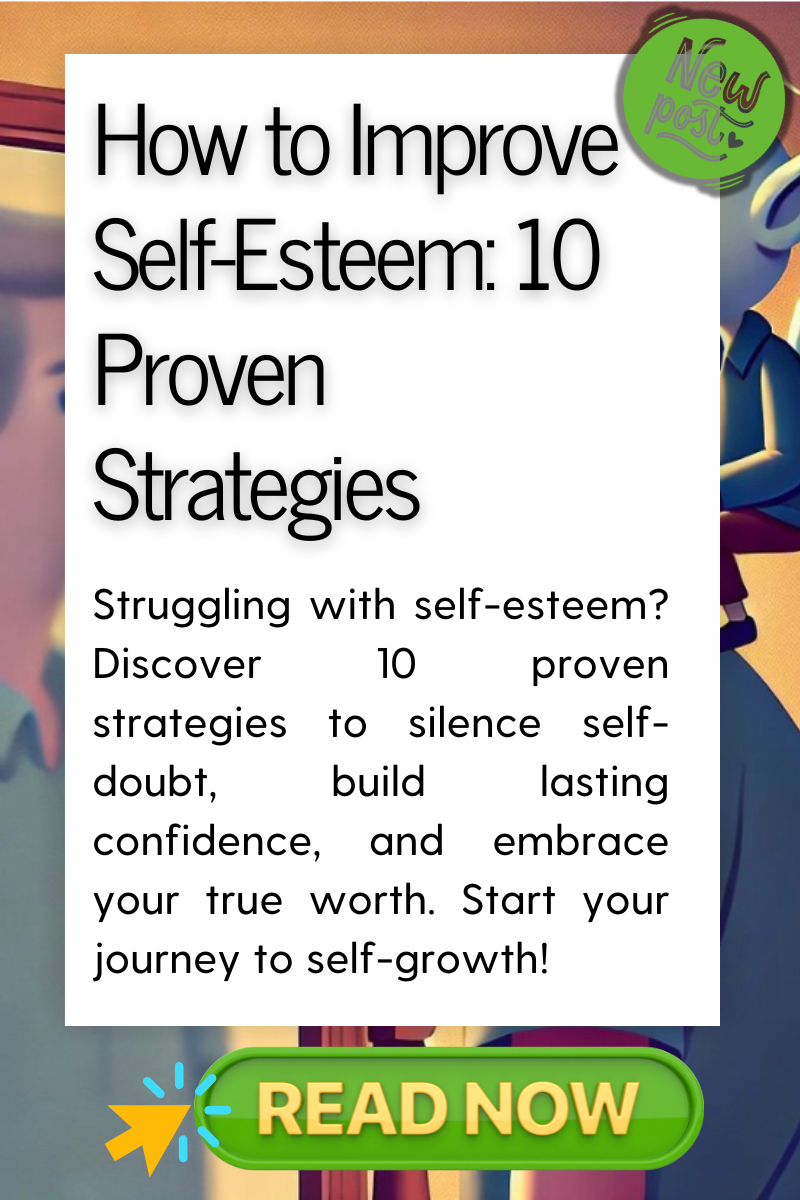Stuck in a Rut? 6 Steps to Get Out and Thrive
Good news: Ruts aren’t life sentences… they’re signals it’s time to take small steps toward a fresh start.
When “Same Old” Starts to Hurt
I showed up at the same coffee shop every Tuesday. Same seat, same drip, same indie playlist leaking from the ceiling speakers. Six straight months, no pause. On paper, daily life looked great. Bills paid. Kids laughing. Dog nudging the leash to my feet. Yet inside, joy flickered but never sparked.
It wasn’t depression, exactly. I could still laugh at memes and remember where I parked. It was something subtler: a mental rut built from dozens of small things that used to help but now held me hostage.
The first step out of any rut is simply admitting you’re in one. So I did.
And that’s when I realized something else: a rut isn’t a cliff; it’s a negative loop carved by repetition and an oversized fear that the next thing might fail.
If your current situation sounds similar—if you’ve been scrolling the same three apps on a loop or eating the same cereal while telling the same someday story—this guide is for you. Over the next few pages we’ll break the loop, reboot your daily routine, and build new habits that make you feel fully awake again.
Grab a mug (or better yet, a cup of tea). Fresh perspective incoming.
What a Rut Really Is (and Isn’t)
The DNA of a Rut
A rut isn’t a medical label. It’s simply day-to-day life stuck in autopilot. It often forms when:
Major life changes (a new job, breakup, relocation) happen but routines stay frozen.
Stress ramps up, so you choose comfort that’s quick but hollow—late-night sugar, endless TikTok.
A big goal gets crossed off, and suddenly there’s no sense of purpose pressing you forward.
Your brain—specifically the dorsolateral prefrontal cortex, the planning hub—likes saving energy. This part of the brain governs self-control and working memory, and research shows it can get sluggish from routine and stress (source). It will keep recycling the old loop because it’s easy, not because it’s good. Over time that loop crowds out new experiences, good habits, and positive actions.
Quick Self-Scan: Rut or Something More?
Check in with yourself on these points:
Mood:
If you’re feeling flat but can still flex into lighter moments, it’s likely a rut. But if your mood stays persistently low, it might signal depression or burnout.
Energy:
Feeling “meh” but still functional usually points toward a rut. But if your energy levels feel completely depleted (“bone-dry”), you may need deeper support.
Motivation:
If motivation dips mostly around certain tasks or actions, that’s a common rut symptom. When motivation vanishes entirely, it might indicate something more serious.
Joy:
When joy feels dull but still within reach, you’re probably in a rut. If joy seems completely absent, consider depression or burnout as possibilities.
Sleep:
A bit of restless sleep can accompany a rut, but if sleep is severely disrupted, professional help might be needed.
This shows up in the opening lessons of the Find Your Purpose Course. If your experience lines up closely with the deeper symptoms described, seeking professional help from a therapist or doctor is your best first step. Otherwise, let’s dive in and start mapping your path forward.
Step 1 — Name the Pattern, Map the Loop
Most important thing today: Call the rut by its real name.
Loop-Mapping Exercise
Think back to yesterday, from sunrise to bedtime.
Step 1: Identify Your Triggers
What situations, emotions, or locations started your autopilot mode?
Example:
Alarm goes off at 6:30 a.m. (trigger: morning discomfort)
Post-lunch energy dip (trigger: fatigue)
Evening boredom at 9 p.m. (trigger: restlessness)
Step 2: List Your Routines
Notice every habitual action—clicking social media, grabbing snacks, even rearranging playlists counts.
Example:
Hitting snooze repeatedly
Scrolling Instagram with an energy drink
Netflix paired with salty snacks
Step 3: Spot the Rewards
What’s the immediate payoff? Distraction, relief, or a small dopamine hit?
Example:
Avoiding the cold floor in the morning
Quick sugar buzz and distraction from afternoon slump
Numbness and comfort from late-night Netflix binges
When you look at your day this way, patterns become clear… a habit loop. This mirrors the habit loop popularized by Charles Duhigg—cue, routine, reward—which explains why even small changes in routine can spark bigger shifts. For instance, hitting snooze pushes your whole schedule back, causing an afternoon caffeine crash and late-night binge-watching—a self-reinforcing loop.
Good news: Disrupt just one part of the loop, and the entire pattern weakens. Something as simple as placing your phone across the room forces you out of bed, breaking the snooze cycle and setting a new positive chain in motion.
Mini Case – Family Member Loop
My client Rosa felt stuck calling her mom every day, only to end each chat drained. We mapped it:
Trigger: drive home → craving connection
Routine: call mom → conversation turns critical
Reward: illusion of duty fulfilled (plus guilt)
We swapped “call mom” with “call upbeat family member” or queue a podcast. After two weeks Rosa’s evening mood lifted, and she saved the harder calls for Sundays when she had more emotional bandwidth.
Action for you: Circle the loop draining you most—maybe social media doom-scrolls or late-night salty snacks. That’s your leverage point.
Step 2 — Shrink the Change with Tiny Wins
Fear of failure hates specifics but melts under tiny changes. This concept is central to BJ Fogg’s Tiny Habits method, which shows that micro-successes build lasting behavior change faster than big goals. Pick any of these 24-hour Micro-Challenges and notice how momentum returns.
Fresh air first. Bare feet on grass for 120 seconds before unlocking the phone. Oxygen + novelty resets circadian rhythm.
Two-minute tidy. Clear one drawer or tab list. Order kills invisible stress.
Hydration hitch. Pair each coffee with 12 oz water. Healthy food habits often start with simple hydration.
Morning win. Finish one email draft or 20 push-ups before checking messages.
Gratitude ping. Text a friend genuine thanks. Builds social capital and better emotional health.
Celebrate with a fist pump. That micro-reward teaches the basal ganglia (habit hub) that good effort gets a prize.
Little things compound. Ten wins in a week equals a hundred in ten weeks. Lot of times, that’s enough to flip the script.
Why Tiny Works
Amygdala stays calm—nothing “dangerous” about a two-minute task.
DLPFC logs a success. Dopamine flows, urging repeat.
The negative loop loses gravitational pull because the brain now has alternative routes.
Keep stacking wins until you’re ready for bigger plays—like rewriting your entire morning routine.
Step 3 — Rewire Your Days (and Nights)
A rut survives on regular basis scripts. Rewrite the script, and the rut loses its lines.
Morning Reboot (First 60 min)
0-5 min:
Start your day with a glass of water and gentle stretching.
This simple action hydrates your body and wakes up your muscles.
5-15 min:
Write one line about your sense of purpose—why today matters to you.
This helps quiet anxiety and keeps you emotionally grounded.
15-25 min:
Engage in physical activity, even something small like jump rope, yoga, or stretching.
Movement stimulates brain chemicals like BDNF, which boosts your mood and cognitive function.
25-35 min:
Write down three achievable goals for your day.
This small act brings clarity, direction, and a sense of intention.
35-60 min:
Tackle your most important task—the deep work you’ve been avoiding.
Your willpower peaks early, making this the perfect time for focused effort.
Keep repeating this reboot daily, and you’ll quickly notice how these small morning adjustments create lasting momentum.
Midday Energy Audit
At 2 p.m., stand, drink water, open a window. Fresh oxygen fights that “I deserve sugar” spiral.
Evening Cool-Down
Screen sunset—devices off one hour pre-sleep.
Wins Jar—drop a slip with today’s good things.
Adequate sleep—7+ hours of good sleep is non-negotiable.
Run this daily discipline 14 days. Watch how bad habits shrink and good habits multiply with very little effort.
Feeling stuck right now? Pause and pick just one simple step from above to try right now. Small actions matter more than perfect plans.
Step 4 — Expand Your Comfort Zone
Comfort zones calcify; new adventures dissolve the crust.
Four Low-Risk Adventures
Neighborhood remix. Walk a street you’ve never explored.
Skill sampler. Two YouTube tutorials on drawing or chords. New skill = new synapse.
Stranger playlist trade. Ask a cashier for a favorite song. Different people, different experiences.
Hands-dirty Saturday. Volunteer for a park clean-up. Positive way to merge emotional health with sweat.
If nerves rattle, tell yourself: “I’m not chasing perfection—just best effort.” Over time the brain learns that “new” can be neutral or even exhilarating. That’s neuroplasticity in action—your brain rewires itself through repeated exposure to novelty (source).
Step 5 — Rally Your People & Pros
Inner-Circle Audit
Think about your interactions today: Did your gym buddy, Jamie, energize you both after morning coffee and dinner? Keep friends like Jamie close—those double-plus people make life brighter and help pull you out of ruts.
But notice when conversations drain you—like the evening call with Uncle Ron, who spirals into negative news. If you can, minimize these double-minus interactions. For unavoidable negative conversations, try gentle boundary-setting scripts like:
“I’m working on personal growth. Can we spend five minutes on the issue, then switch to solutions?”
Even moderate positives, like Lin from your book club, who provide mild boosts of encouragement, are valuable. Cultivate these relationships, too. Small lifts add up.
When to Call a Pro
If your lack of motivation lasts beyond 90 days, your emotional rut deepens, or your fear of failure feels overwhelming, it might be time to seek professional support. Learn more about the clinical signs of depression vs burnout so you can get the right kind of help if needed. A coach or therapist can provide targeted strategies and structured guidance to move forward.
A professional coach helps you build scaffolding—practical frameworks for daily change. A therapist digs deeper beneath the surface, uncovering emotional roots. Both are valuable. Reaching out for professional help is strategic, empowering, and often exactly what’s needed.
Step 6 — Celebrate, Iterate, Elevate
At the end of the day, progress survives by recognition.
The Wins Jar 2.0
After 30 days, pour the slips, read them aloud, then burn or shred—ritual matters. Ritual marks transition.
Monthly Retrospective
Ask:
Which small changes sparked the biggest lift?
Where did unseen fear of the unknown hold me back?
Which new way of doing things felt most alive?
Turn answers into new goals. Maybe bump the walk to 5 K training or turn doodles into an Etsy store. Continuous improvement is simply curiosity in motion.
Key Insights — Reflection Exercise
Spend five minutes on each prompt:
Loop Autopsy: Name one loop you broke. How does your body feel picturing the change?
Tiny Wins Inventory: List five victories so “little” you almost skipped them.
Future-You Letter: Write 120 words dated six months out, thanking Present-You for today’s start.
Reflection converts experience into integrated wisdom. Do it on a daily basis or at least weekly.
Closing Thought
Most humans share the same human needs: autonomy, connection, progress. A rut simply muffles those needs under routine. But routine rewrites easily when you:
Name the loop.
Win tiny.
Rewire days.
Expand comfort.
Rally allies.
Celebrate often.
Do that, and life tilts forward. Coffee tastes brighter. Strangers look interesting, not threatening. And you realize you were never broken—just buffering.
Start now: Stand, stretch, inhale—like you’re meeting fresh oxygen for the very first time. That’s the first domino. The next is already leaning.
Reflection’s good... action’s better. Check out the Find Your Purpose Course.
Further Reading
Dorsolateral Prefrontal Cortex & Mental Fatigue – Brain fatigue from routines explained
The Power of Habit – How cues and routines shape your day
Neuroplasticity 101 – How trying new things rewires your mind
Burnout vs. Depression – When it’s time to get professional help
Ready to Step Out of Your Rut?
Small steps create big changes. If you’re feeling stuck and ready for fresh momentum, let’s find the clarity and practical strategies that fit your real life. Book your free consultation now and start reclaiming the joy that’s been waiting for you.
Join the Conversation
This post is one side of the story… the other side is yours. What came up for you?
FAQs: Getting Unstuck and Moving Forward
Q: What's the very first step to getting out of a rut?
A: The most important thing is admitting you're in one. Naming it clearly takes away some of its power and helps you map your way out.
Q: How do I know if I'm in a rut or if it's something more serious like depression?
A: A mental rut usually feels flat but manageable. Depression typically involves deeper, persistent symptoms like significantly disrupted sleep, loss of joy, or complete lack of motivation. If you're unsure, professional help is always a wise next step.
Q: Can I really get out of a rut just by making small changes?
A: Absolutely. Small steps—like adjusting your daily routine, trying new experiences, or connecting with different people—compound over time. Tiny changes often lead to great things faster than big leaps.
Q: What if I keep failing when I try new habits?
A: That's normal. Let go of perfectionism and focus on specific actions rather than outcomes. Celebrate little things; each effort counts, even if it seems minor.
Q: When should I seek professional help?
A: If your emotional rut lasts longer than a few months, your lack of motivation intensifies, or emotional symptoms interfere heavily with daily life, reaching out for professional support from a therapist or professional coach is one of the best ways forward.
Q: How important is emotional health in breaking free from a rut?
A: It's crucial. Improving emotional health through adequate sleep, physical activity, fresh air, and social connections provides a strong foundation for making sustainable changes.
Q: What's a quick way to refresh my perspective daily?
A: Get outside briefly, even for just two minutes. Fresh air and sunlight can reset your brain, reducing stress and increasing clarity in your day-to-day life.
Q: How can friends or family members help me escape a rut?
A: They provide perspective, encouragement, and accountability. Engage regularly with supportive people who energize rather than drain you. Good connections can significantly boost your progress.
Still carrying questions that didn’t make this list? That’s a sign you’re ready for something deeper. Let’s talk about the version of balance that fits you.
Essential Reads for Getting Un-Stuck
If you’ve spent a long time feeling the unseen forces of a spiritual rut tug at your everyday life, the next step might be a book that nudges you toward motion. Below are five favorites—chosen because they speak to the important things without promising an easy fix. Dip into whichever title feels like it belongs in this part of your life right now, then note the positive things that surface on your to-do list.
1. The Gifts of Imperfection — Brené Brown
Brown shows, story by story, how to go of perfectionism (her grammar-bending phrase, not a typo) and trade it for wholehearted living. She reminds us that the best things rarely look perfect the last time we check; they look real.
2. Essentialism — Greg McKeown
Overwhelm usually isn’t about too little time—just too many commitments. McKeown walks you through trimming a bloated schedule down to simple tasks and smaller things, freeing enough time for what matters.
3. The Power of Now — Eckhart Tolle
Tolle invites you to stop looping through past experiences and fearing bad things that haven’t happened. By anchoring attention in your current state, you discover how many great things are already here.
4. Tiny Habits — BJ Fogg
When personal struggles feel like much pressure, Fogg’s micro-change method shrinks success down to a single push-up or a sip of water. A small win, repeated for a number of reasons, scales fast.
5. Man’s Search for Meaning — Viktor Frankl
Frankl blends memoir with psychology to prove purpose can bloom under the harshest conditions. His insights on connection, hope, and social life help reframe suffering into fuel for growth.
How to use these books:
Read with a pen in hand, jot one insight per chapter, and pin that note where you can see it during the day. Over time, those scribbles become breadcrumbs leading you out of the rut and toward something far brighter.
Need to Go Deeper?
Still wondering which book feels right, or need something more personal? That’s your signal to go deeper. Let’s find the insights that move you forward, together.
Work with Josh — Where Small Steps Meet Big Shifts
If scrolling articles has helped a little bit but you still feel those lingering emotional symptoms—anxiety in quiet moments, motivation that fizzles by lunch—coaching can close the gap. My practice blends evidence-based tools for mental health with everyday pragmatism: we chase progress through small steps, not grand gestures.
Here’s how it works:
Daily activities, re-engineered. We’ll tweak your schedule in the best ways science knows—sleep, movement, focus sprints—so momentum shows up before willpower is gone.
High standards, healthy fuel. Perfectionism gets a reset; we keep the ambition but trim the self-critique.
Experiments with new things. Each week you’ll test one fresh habit or mindset shift—nothing huge, just enough novelty to spark the brain.
Personal dashboards. Simple trackers turn fuzzy feelings into clear data, so you can watch your baseline rise session by session.
If you’re ready to feel lighter, clearer, and genuinely excited about tomorrow, book a free 15-minute consultation. Together we’ll map the first two or three moves that fit your real life—and start stacking victories you can see.



























